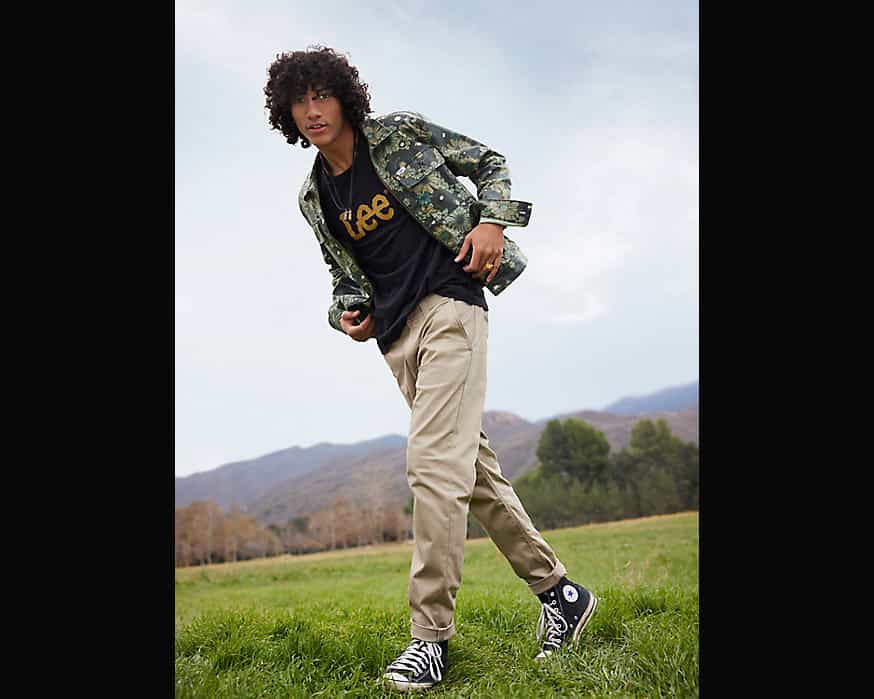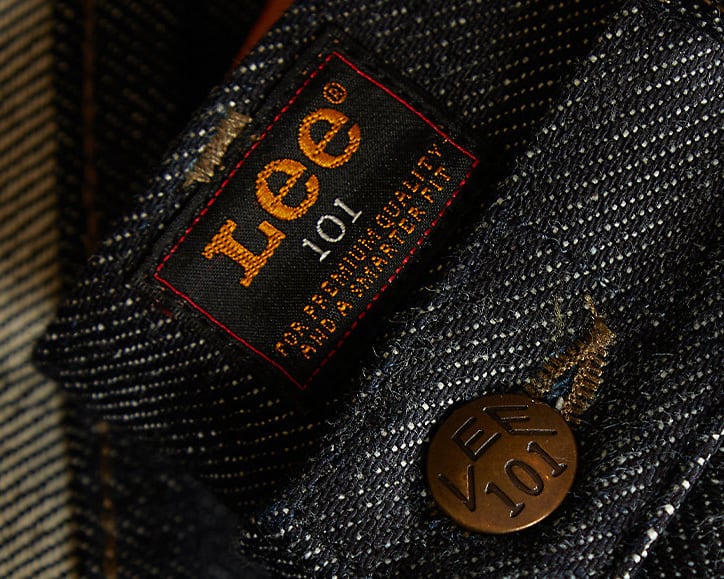CATCHING UP WITH LEE

We recently had a chance to talk to Brigid Stevens, VP Global Brand Marketing at Lee, to find out what’s going on at the iconic denim brand, and to see what stores can anticipate for the upcoming market.

MR: Where does Lee fit into the modern denim market?
BS: Lee has a strong global presence. We are the leading denim brand in China, with growing popularity in EMEA and a long-standing strong position in the US. We are growing digitally as well, seeing positive returns in Q2 and expanding our presence in upscale denim retailers such as American Rag, Milworks, and Today Clothing.
People grew up with Lee and are rediscovering the brand via these key specialty retailers. We continue to merge our timeless heritage with curated trends and it’s driving awareness and excitement around our brand.
Lee offers quality jeans and tops for shoppers across different price points. We have pieces ranging from $30 to $300 and up. One of our most popular men’s lines is the Extreme Motion jean; it has a performance-based waistband that offers great stretch and flexibility. That jean costs under $60. Compare that to our premium 101Z jean made with Kaihara selvedge denim — a true working piece of history — which costs around $200.
We’re leaning into our heritage and exploring new ways to reintroduce Lee to an audience that is currently rediscovering our brand through vintage stores and the secondhand market. For example, our Chetopa Twill line. We first introduced that fabric in 1951 as the strongest and most durable twill for workwear; we brought it back with sustainable and comfort elements in heritage workwear designs such as a Union-All, service jacket and chinos.
Our 101 collection is another example of exploring how our heritage connects with a new audience. 101 really appeals to the denim aficionado and those who appreciate fine craftsmanship. Named after our 101 Rider jean – which was originally designed in 1925 – this collection sources fabrics from mills such as Candiani, Kaihara, Kurabo, and Kuroki, as well as using authentic workwear textiles like duck canvas and chambray, stamped leather patches, and heritage details. Each piece replicates vintage designs from our archives and delivers a level of craftsmanship that makes it a walking piece of American denim history.
This is also where collaborations play an important role. Recent collaborations such as the Lee x Smiley capsule and the Lee x The Hundreds capsule provide Lee with an opportunity to connect to new consumers. We are selective with our collaborations to ensure there’s an authentic foundation between both partners.
MR: Who are the brand’s leading retailers?
BS: We’ve seen some great momentum with high-end boutiques like American Rag, Milwork, and Nordstrom. Lee has always had a strong presence in mid-tier markets. Online has been interesting to watch as more stores amp up their digital presence particularly due to the pandemic, and we are continuing to see growth there with existing as well as new consumers.
MR: What are Lee’s sustainability initiatives?
BS: Lee launched our For a World that Works initiative in 2020 to focus on four key goals:
- Power 100 percent of all owned and operated facilities with renewable energy by 2025.
- Utilize more than 50 percent sustainable synthetics by 2025.
- Source 100 percent sustainably grown or recycled cotton by 2025.
- Increase Indigood dyed products every year through 2025.
This global effort showcases our commitment to integrating sustainable solutions into all we do from people, product-to-plant. It’s important to Lee that we offer products with sustainability practices incorporated at all price points and make lower waste products accessible for all Lee consumers.
MR: Any more fun new collaborations coming out?
BS: Lee x The Hundreds second drop just launched in late May. The capsule is inspired by both brands’ roots, showcasing classic Lee jean and Rider jacket styles with embroidered wildflowers, as well as pop-colored tees and hoodies. The wildflowers were originally hand-drawn by The Hundreds’ founders, inspired by their native California coast.

MR: What should retailers anticipate as we head into the SS2023 market?
BS: Comfort remains a constant as we slowly emerge from the global pandemic, but people will begin seeking more fashion options. You will see comfort reinterpreted through that lens as mainstream denim shifts into looser fits and modern workwear styles.
MR: What’s working and what’s not working in the denim market these days?
BS: There seems to be a little bit of ‘everything goes’ right now. The nod to the ‘90s and early ‘00s remains with looser fits trending, but there is still a desire for a great slim straight or bootcut fit as well. Social media is creating impact that I think was unexpected and it’s fascinating to see how Gen Z in particular is using TikTok and social media to create their own trends or to reinterpret and rediscover those of the past. Think back to the debate over skinny jeans being dead, or micro trends emerging based on pop culture moments, like “regency wear” inspired by Bridgerton.



